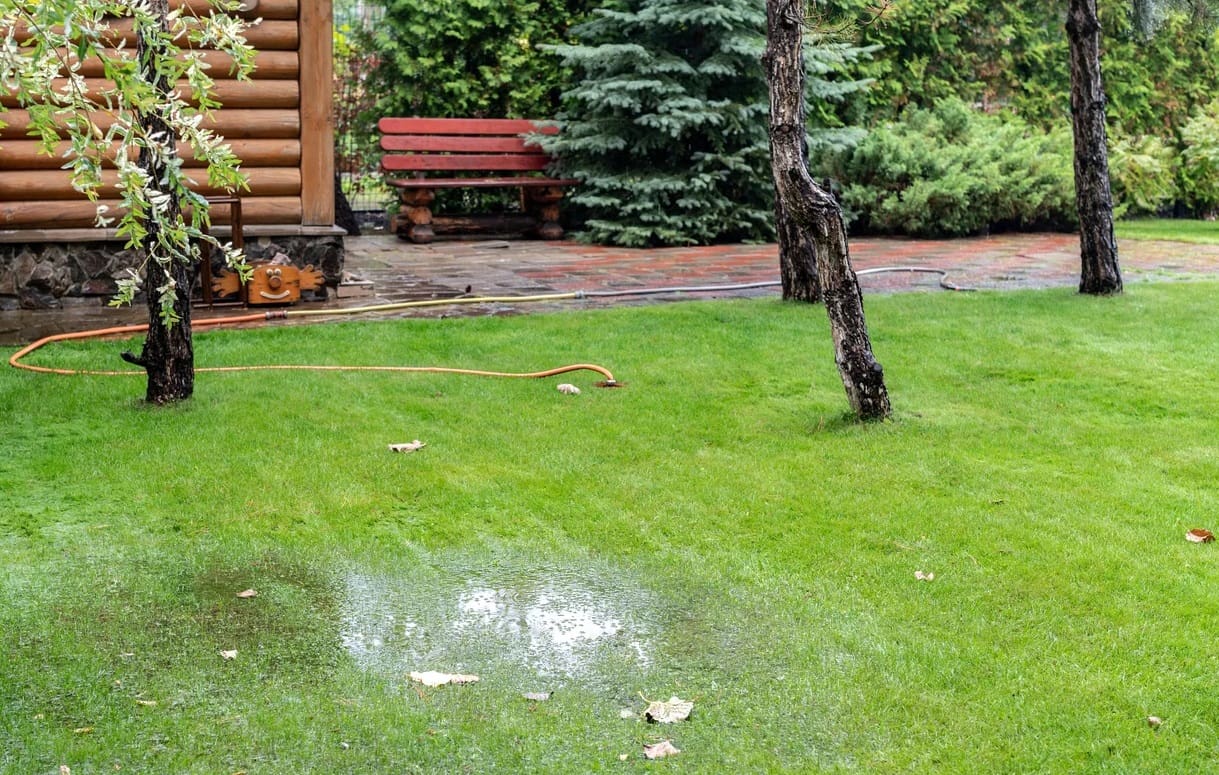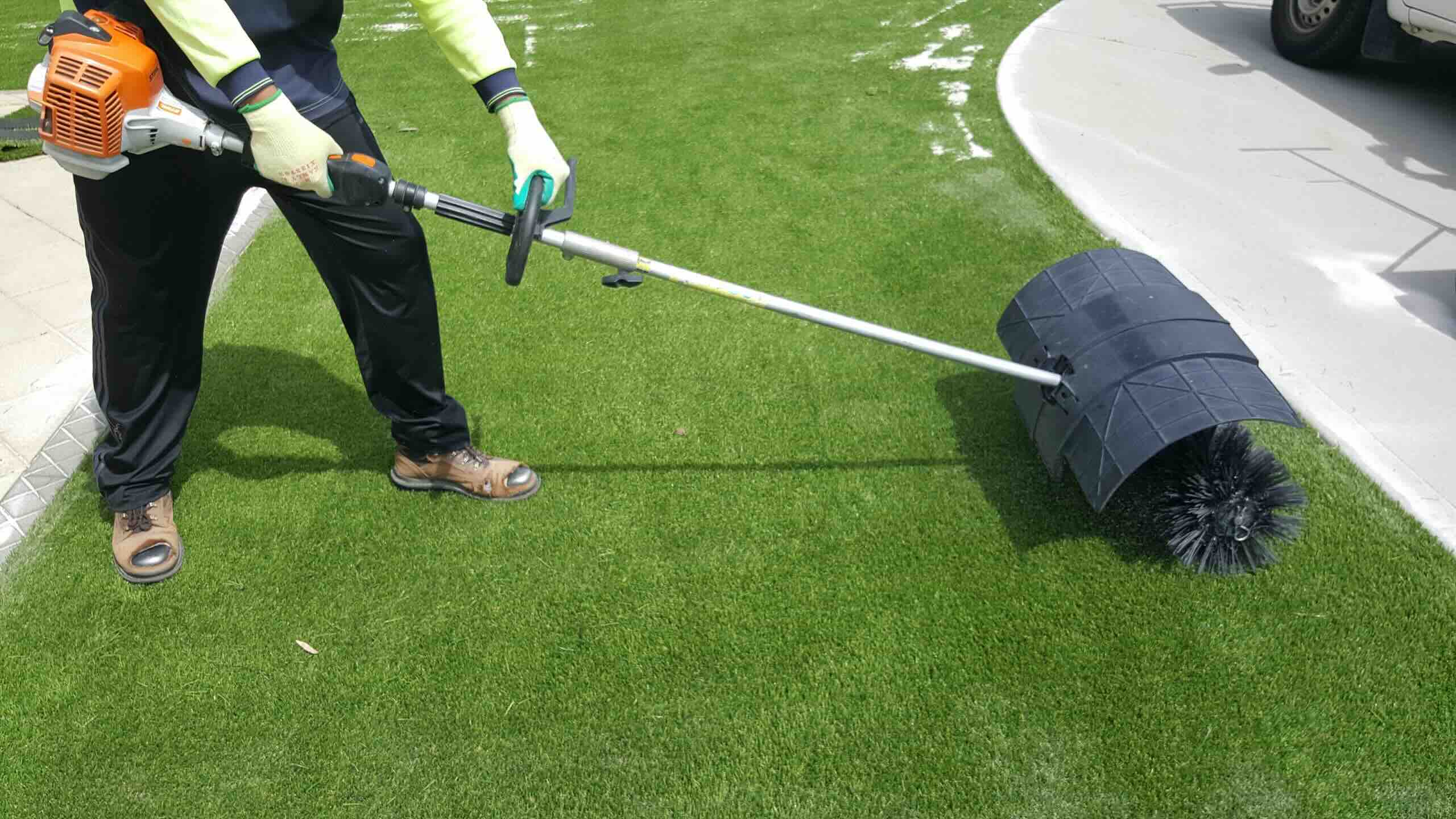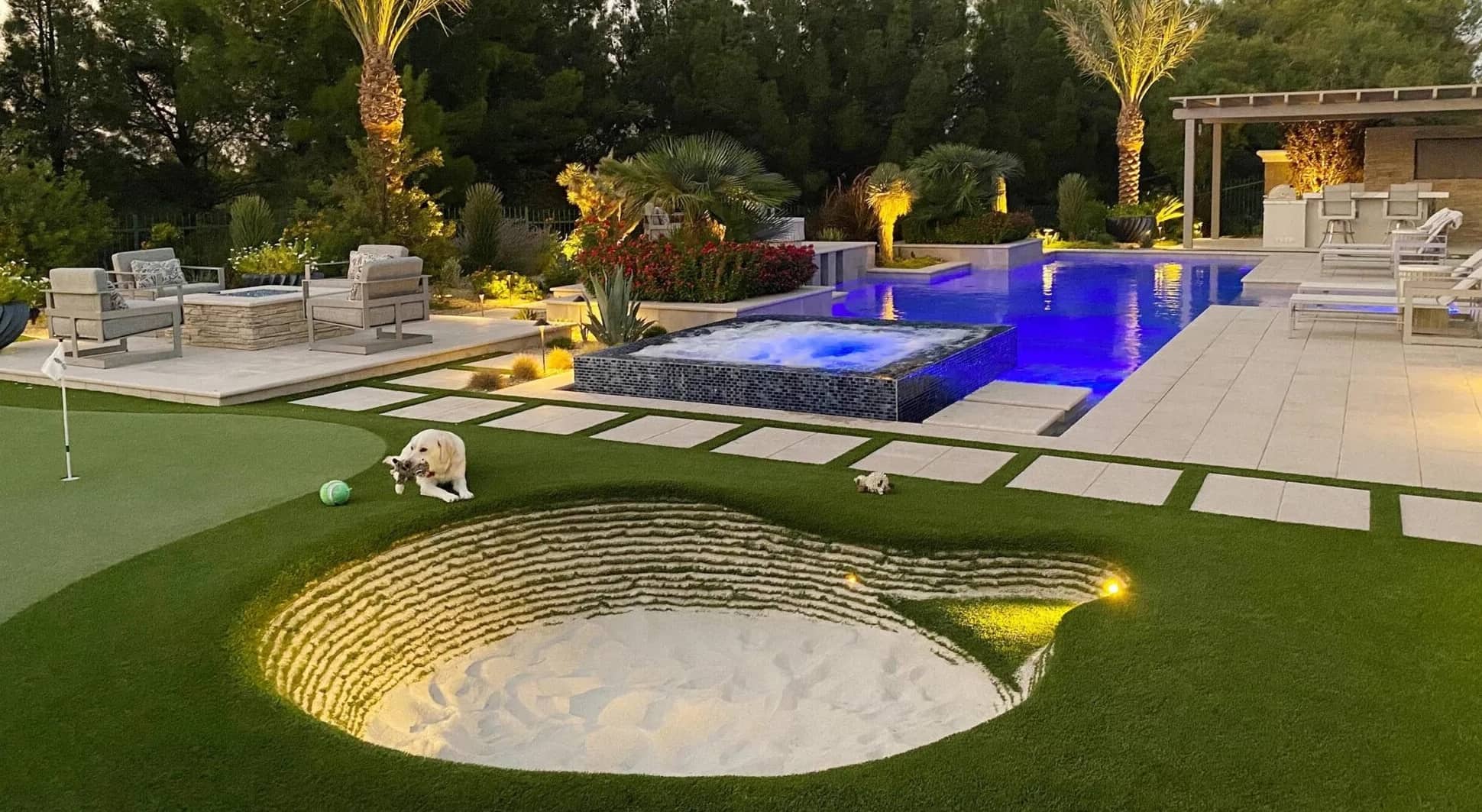Home>Gardening & Outdoor>Landscaping Ideas>What To Replace Grass With In Backyard


Landscaping Ideas
What To Replace Grass With In Backyard
Modified: September 1, 2024
Discover creative landscaping ideas for your backyard. Find out what to replace grass with and transform your outdoor space with ease.
(Many of the links in this article redirect to a specific reviewed product. Your purchase of these products through affiliate links helps to generate commission for Storables.com, at no extra cost. Learn more)
**
Introduction
**
When it comes to creating a stunning backyard, many homeowners are rethinking the traditional grass lawn. While grass can offer a lush and green landscape, it often requires significant maintenance, water, and resources to keep it looking its best. As a result, more and more people are seeking alternative landscaping ideas that not only reduce the upkeep but also enhance the beauty and functionality of their outdoor spaces.
In this article, we will explore a variety of creative options for replacing grass in your backyard. Whether you're looking for low-maintenance ground covers, drought-tolerant plants, or hardscaping alternatives, there are numerous possibilities to transform your yard into a visually captivating and sustainable oasis. By considering these alternatives, you can not only reduce the time and effort spent on lawn maintenance but also contribute to a more eco-friendly and water-efficient landscape.
Join us as we delve into the world of innovative landscaping ideas and discover the myriad of possibilities for replacing traditional grass with unique and practical alternatives. Whether you're aiming for a more sustainable and eco-conscious yard or simply seeking a fresh and distinctive look, there's a perfect grass replacement solution waiting to elevate your outdoor space.
Key Takeaways:
- Say goodbye to traditional grass lawns and hello to low-maintenance ground covers, drought-tolerant plants, and hardscaping options for a stunning, eco-friendly backyard oasis.
- Embrace sustainable and visually captivating landscaping alternatives to reduce water usage, minimize maintenance, and create a vibrant outdoor retreat that reflects your unique style and values.
Benefits of Replacing Grass
Embracing alternative ground cover options in place of traditional grass lawns offers a host of benefits that extend beyond the aesthetic appeal of your backyard. Let’s explore the advantages of replacing grass with innovative landscaping alternatives:
- Water Conservation: Unlike thirsty grass lawns, many alternative ground covers and plants require significantly less water, contributing to water conservation efforts and reducing your overall water usage.
- Low Maintenance: By choosing low-maintenance ground covers or hardscaping options, you can minimize the time and effort spent on mowing, fertilizing, and weeding, allowing for a more leisurely outdoor experience.
- Biodiversity and Habitat: Diverse ground cover options can attract beneficial insects, birds, and other wildlife, fostering a thriving ecosystem in your backyard and promoting biodiversity.
- Sustainability: Many grass alternatives are more sustainable and eco-friendly, requiring fewer chemical inputs and reducing the environmental impact associated with traditional lawn maintenance.
- Visual Interest: Replacing grass with a variety of ground covers, plants, or hardscaping elements can add visual interest and texture to your landscape, creating a unique and captivating outdoor environment.
- Reduced Allergens: For individuals sensitive to grass pollen or allergens, alternative ground covers can provide a welcome respite by minimizing exposure to common lawn-related allergens.
- Cost Savings: With reduced water usage, minimal maintenance requirements, and fewer lawn care expenses, choosing grass alternatives can lead to long-term cost savings and a more budget-friendly landscaping approach.
By considering the numerous benefits of replacing traditional grass with innovative landscaping alternatives, homeowners can transform their outdoor spaces into sustainable, visually striking, and ecologically conscious environments.
Low-Maintenance Ground Covers
For homeowners seeking a lush and vibrant ground cover option that requires minimal upkeep, a variety of low-maintenance alternatives to traditional grass lawns are available. These ground covers not only reduce the need for mowing and extensive maintenance but also offer unique textures, colors, and visual appeal. Here are some popular low-maintenance ground cover options to consider:
- Creeping Thyme: This fragrant and drought-tolerant ground cover forms a dense mat of tiny leaves and delicate flowers, providing a charming and colorful addition to your landscape. Creeping thyme requires minimal water and thrives in sunny locations, making it an ideal grass substitute.
- Creeping Jenny: With its cascading, golden-yellow foliage, creeping jenny offers a striking and low-maintenance option for ground cover. This perennial plant spreads quickly, filling in bare areas and suppressing weed growth while adding a pop of vibrant color to your yard.
- Irish Moss: Perfect for filling in between stepping stones or lining pathways, Irish moss forms a dense, emerald-green carpet that thrives in shaded or moist areas. This low-growing perennial requires little maintenance and adds a touch of elegance to any outdoor space.
- Perennial Peanut: As a drought-tolerant and ground-hugging plant, perennial peanut offers a resilient and low-maintenance alternative to traditional grass lawns. Its small yellow flowers and rich green foliage create a visually appealing ground cover that requires minimal care.
- Stonecrop Sedum: Ideal for sunny and dry locations, stonecrop sedum features succulent foliage and vibrant blooms, adding a unique texture and visual interest to your landscape. This hardy and low-maintenance ground cover is an excellent choice for water-wise gardening.
By incorporating these low-maintenance ground covers into your backyard, you can enjoy the beauty of a lush and vibrant landscape while minimizing the time and effort typically associated with traditional lawn maintenance. These alternatives offer an array of colors, textures, and growth habits, allowing you to personalize your outdoor space with ease.
Drought-Tolerant Plants
For homeowners in regions with arid climates or those looking to conserve water while maintaining a visually appealing landscape, incorporating drought-tolerant plants provides an excellent alternative to traditional grass lawns. These resilient and water-wise options not only reduce the need for frequent watering but also add a vibrant and sustainable touch to your outdoor environment. Here are several drought-tolerant plants to consider for your backyard:
- Lavender: Known for its fragrant blooms and aromatic foliage, lavender is a versatile and drought-tolerant plant that thrives in sunny, well-drained locations. This resilient herb adds color, texture, and sensory appeal to your landscape while requiring minimal water once established.
- Yucca: With its striking, sword-shaped foliage and dramatic flower spikes, yucca plants offer a bold and low-maintenance addition to arid landscapes. These architectural plants are well-suited to dry conditions and provide a sculptural focal point in your yard.
- Agave: Renowned for its striking rosette form and succulent leaves, agave is a drought-tolerant plant that lends a touch of elegance to water-wise gardens. This low-maintenance and visually captivating option thrives in sunny locations and requires minimal watering once established.
- Red Hot Poker (Kniphofia): With its tall spikes of tubular flowers in fiery hues, red hot poker plants add a vibrant and drought-tolerant accent to sunny borders and rock gardens. These striking perennials attract pollinators and thrive in hot, dry conditions with minimal water requirements.
- Russian Sage: Featuring aromatic foliage and airy spires of lavender-blue flowers, Russian sage is a resilient and drought-tolerant plant that adds a soft, ethereal quality to your landscape. This low-maintenance perennial thrives in sunny locations and offers a graceful and water-wise alternative to traditional grass lawns.
By incorporating these drought-tolerant plants into your backyard, you can create a sustainable and visually captivating landscape that thrives in arid conditions while reducing water consumption. These resilient options offer an array of colors, textures, and architectural interest, allowing you to craft a striking and eco-conscious outdoor space.
Consider replacing grass with low-maintenance ground cover plants like clover, thyme, or moss. These alternatives require less water and mowing, and can add visual interest to your backyard.
Hardscaping Options
Integrating hardscaping elements into your backyard offers a versatile and low-maintenance alternative to traditional grass lawns. Hardscaping not only reduces the need for regular watering and upkeep but also provides structure, functionality, and visual interest to your outdoor space. From pathways and patios to decorative rock features, there are numerous hardscaping options to consider for your landscape:
- Flagstone Pathways: Creating meandering pathways with natural flagstone adds a timeless and elegant touch to your backyard. These durable and low-maintenance paths blend seamlessly with the surrounding landscape, offering a functional and visually appealing way to navigate your outdoor environment.
- Patio Pavers: Designing a patio space with interlocking pavers provides a versatile and customizable hardscaping option for outdoor entertaining and relaxation. With a wide range of colors, shapes, and patterns available, pavers offer a low-maintenance and visually striking alternative to traditional grassy areas.
- Rock Gardens: Incorporating a rock garden featuring a variety of indigenous stones and drought-tolerant plants creates a captivating and water-wise focal point in your landscape. These low-maintenance features add texture, contrast, and a sense of natural beauty to your backyard while reducing the need for regular watering.
- Gravel Beds: Utilizing gravel as a ground cover in designated areas offers a practical and visually appealing alternative to traditional lawns. Gravel beds require minimal maintenance, provide excellent drainage, and can be used to delineate specific zones within your outdoor space.
- Retaining Walls: Constructing retaining walls using durable materials such as stone or concrete blocks not only helps manage soil erosion but also adds depth, dimension, and visual interest to your landscape. These hardscaping features create terraced areas for planting or seating while minimizing maintenance requirements.
By incorporating hardscaping elements into your backyard, you can create an inviting, functional, and visually dynamic outdoor environment while minimizing the need for ongoing lawn maintenance. These durable and aesthetically pleasing options offer a range of design possibilities to transform your landscape into a distinctive and low-maintenance retreat.
Read more: How To Maintain Backyard Grass
Considerations for Choosing the Right Replacement
When selecting a replacement for traditional grass in your backyard, several key considerations can guide you toward the most suitable and appealing options. By taking these factors into account, you can make an informed decision that aligns with your aesthetic preferences, maintenance goals, and environmental considerations. Here are essential considerations for choosing the right grass replacement:
- Climate and Sun Exposure: Assess the sunlight and climate conditions in your area to determine which grass alternatives and plants are best suited for your specific environment. Consider factors such as temperature fluctuations, precipitation levels, and sun exposure to select resilient and thriving options.
- Maintenance Preferences: Evaluate your desired level of maintenance, from minimal upkeep to occasional care, and choose grass replacements that align with your maintenance preferences. Low-maintenance ground covers, drought-tolerant plants, or hardscaping elements can offer varying levels of care requirements to suit your lifestyle.
- Water Efficiency: Prioritize water-wise landscaping solutions by selecting grass alternatives that reduce water consumption and promote sustainable water usage. Drought-tolerant plants, permeable hardscaping features, and low-water ground covers contribute to a more water-efficient outdoor environment.
- Visual Appeal and Functionality: Consider the visual impact and functional aspects of potential grass replacements, such as texture, color, fragrance, and practical uses. Whether you seek a vibrant and fragrant ground cover, a sculptural hardscaping feature, or a visually striking plant palette, prioritize options that enhance the beauty and functionality of your backyard.
- Wildlife and Biodiversity: Explore grass alternatives that attract beneficial insects, birds, and wildlife to foster a thriving ecosystem in your backyard. Select plants and ground covers that contribute to biodiversity, pollinator habitat, and ecological resilience for a more vibrant and sustainable outdoor space.
- Long-Term Sustainability: Embrace sustainable landscaping practices by choosing grass replacements that minimize chemical inputs, reduce environmental impact, and promote long-term ecological health. Sustainable options contribute to a more resilient and environmentally conscious backyard environment.
By carefully considering these factors, you can identify the most suitable and appealing replacements for traditional grass in your backyard. Whether you prioritize water efficiency, low maintenance, visual allure, or ecological sustainability, there are numerous alternatives available to transform your outdoor space into a thriving and visually captivating landscape.
Conclusion
As homeowners increasingly seek sustainable, low-maintenance, and visually captivating landscaping solutions, the quest for alternatives to traditional grass lawns has gained momentum. By exploring a diverse array of grass replacements, from low-maintenance ground covers and drought-tolerant plants to hardscaping options, individuals can transform their backyards into vibrant, eco-conscious, and inviting outdoor retreats.
By embracing alternative ground cover options, homeowners can reduce water consumption, minimize maintenance demands, and contribute to a more sustainable and environmentally friendly landscape. Low-maintenance ground covers such as creeping thyme, creeping jenny, and Irish moss offer lush and vibrant alternatives that require minimal care while adding texture and color to the yard. Drought-tolerant plants such as lavender, yucca, and agave provide resilient and water-wise options that thrive in arid climates, offering visual interest and ecological sustainability.
Furthermore, integrating hardscaping elements such as flagstone pathways, patio pavers, and rock gardens offers versatile and low-maintenance alternatives that add structure, functionality, and visual appeal to outdoor spaces. These durable and aesthetically pleasing options minimize the need for ongoing lawn maintenance while creating distinctive and inviting outdoor environments.
When choosing the right replacement for traditional grass, considering factors such as climate suitability, maintenance preferences, water efficiency, visual appeal, wildlife habitat, and long-term sustainability can guide homeowners toward the most suitable and appealing options for their backyards. By carefully evaluating these considerations, individuals can make informed decisions that align with their lifestyle, environmental values, and aesthetic preferences.
In conclusion, the possibilities for replacing grass in the backyard are as diverse as they are inspiring. By exploring innovative landscaping alternatives and considering the unique attributes of each option, homeowners can create sustainable, visually captivating, and low-maintenance outdoor spaces that reflect their individuality and contribute to a more eco-conscious and thriving environment.
Frequently Asked Questions about What To Replace Grass With In Backyard
Was this page helpful?
At Storables.com, we guarantee accurate and reliable information. Our content, validated by Expert Board Contributors, is crafted following stringent Editorial Policies. We're committed to providing you with well-researched, expert-backed insights for all your informational needs.















0 thoughts on “What To Replace Grass With In Backyard”